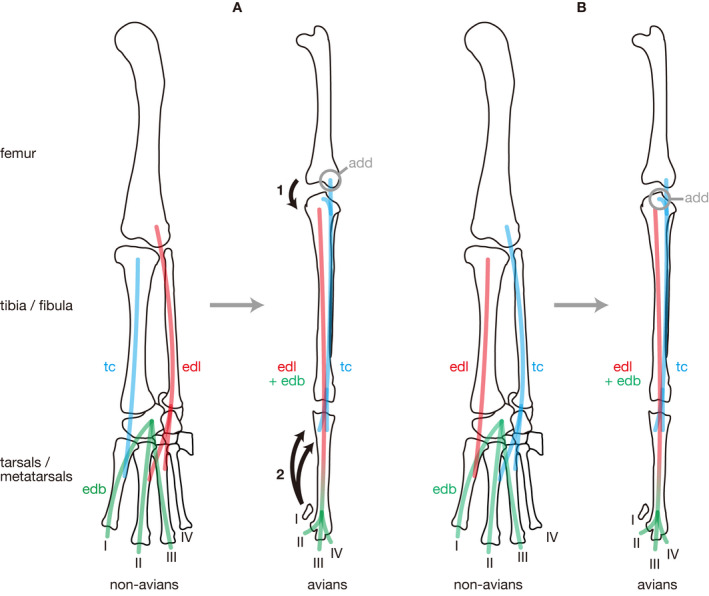Figure 10.

Schematic illustrations comparing hypotheses on the homology of the avian m. tibialis cranialis. (a) Traditional hypothesis accepted in previous studies (e.g. Carrano and Hutchinson, 2002; Hutchinson, 2002). (b) New hypothesis proposed in the present study. Changes in the muscle attachment required for the traditional hypothesis are indicated by numbers in (a). 1, Displacement of the origin of m. extensor digitorum longus across the knee joint; 2, Loss of the insertion of m. tibialis cranialis from MT I. Note that these changes are not necessary for the new hypothesis as shown in (b). Abbreviations: add, addition of the origin of m. tibialis cranialis; edl, m. extensor digitorum longus; edb, m. extensor digitorum brevis; tc, m. tibialis cranialis; I–IV, digits I–IV
